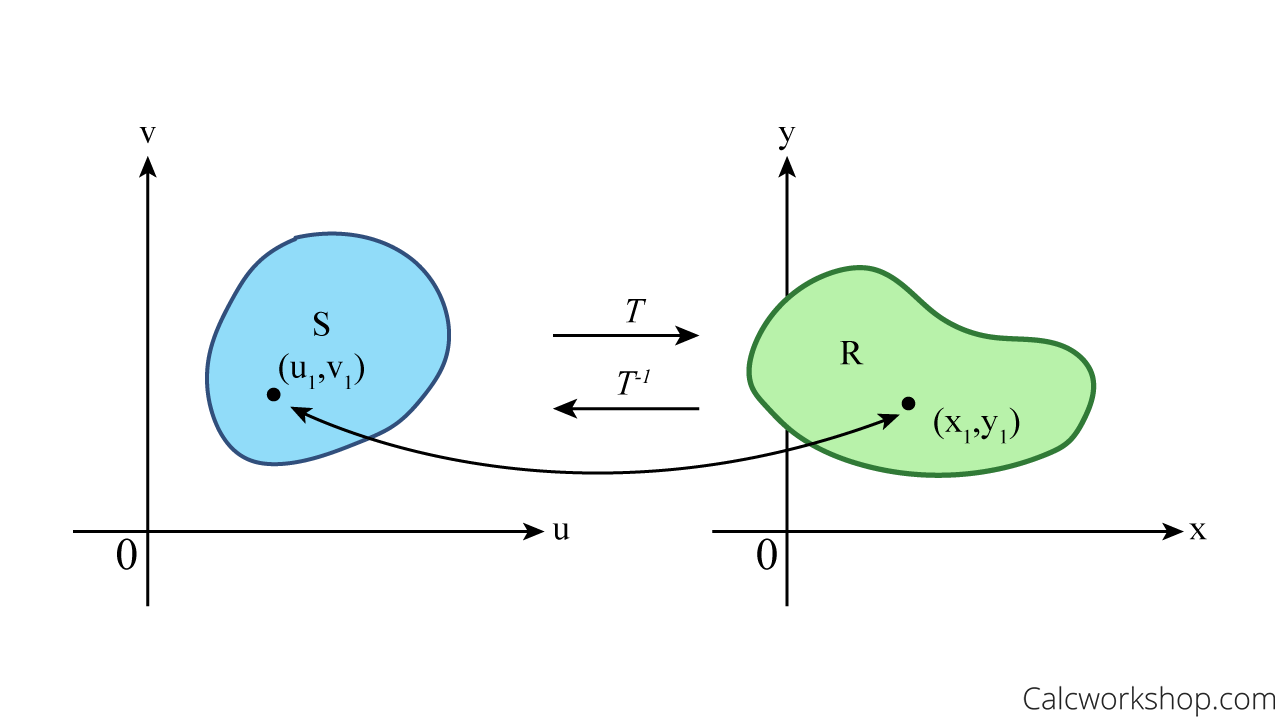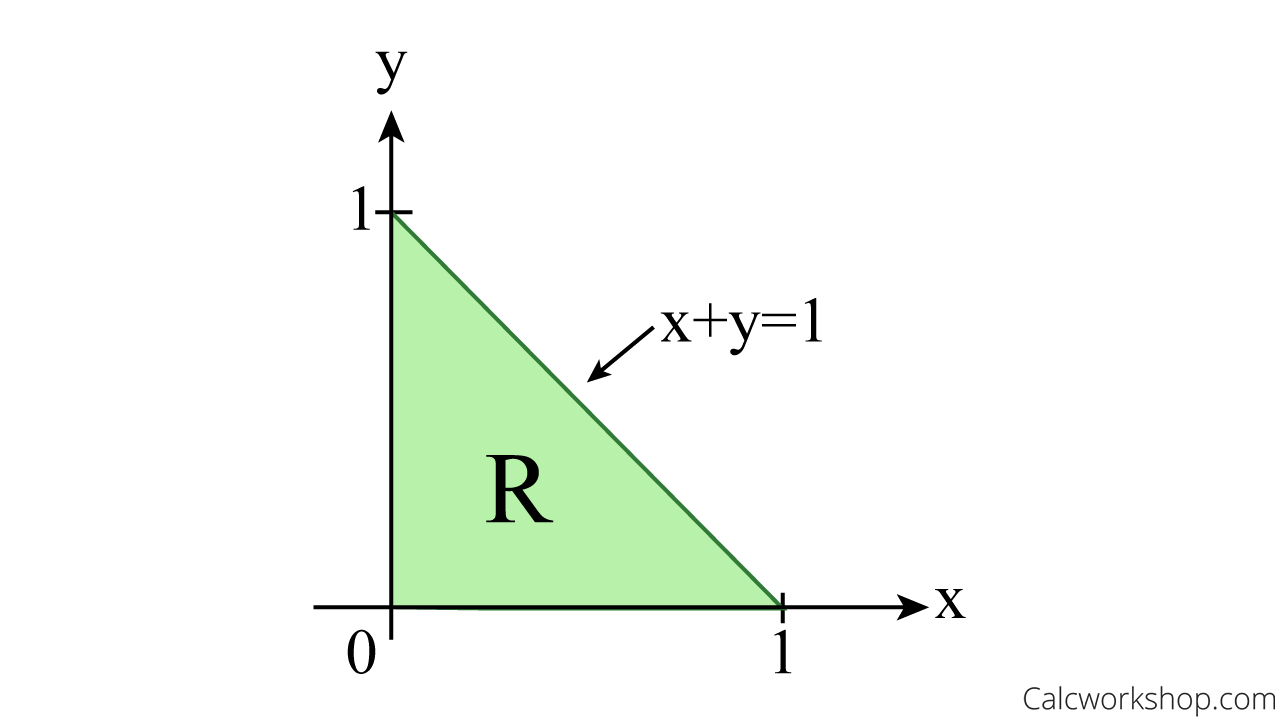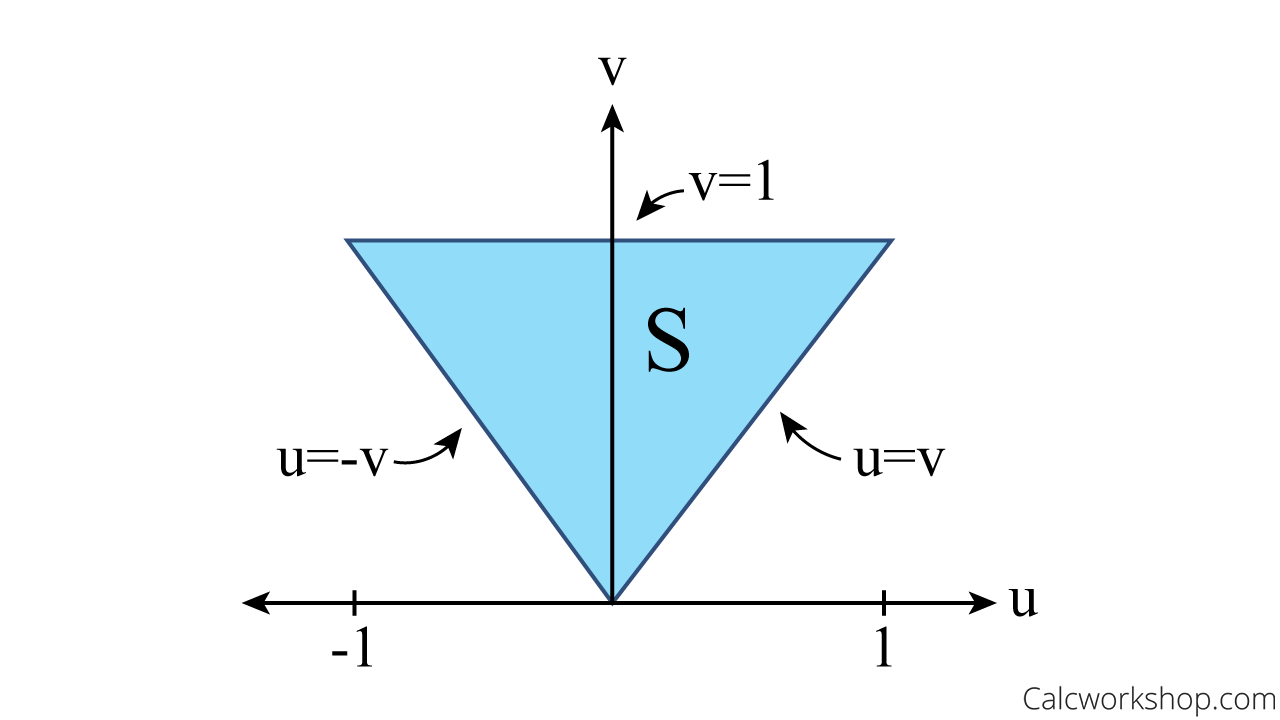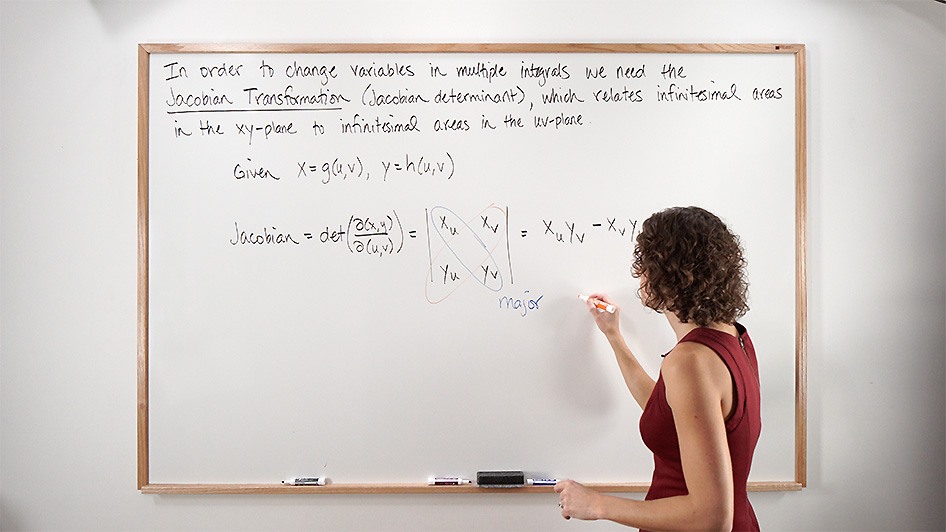
Sometimes changing variables will make a huge difference in our ability to evaluate an integral.

Jenn, Founder Calcworkshop ® , 15+ Years Experience (Licensed & Certified Teacher)
We’ve seen the power of changing variables with u-substitution in single variable calculus, as well as switching to:
for multiple integrals.
But what did these transformations do for us?
By making a change of variables, we went from an integral that was “hard” to evaluate to something that was “easier.”
And let’s be honest…
…making integration easier is always the goal.
So, wouldn’t it be nice if there was a more general method for changing variables in multiple integrals?
And the answer is found in the Jacobian transformation.
Let’s learn why that is.
Okay, so in order to make a change of variables for multiple integrals, we must first consider the one-to-one transformation \(T\left( \right) = \left( \right)\) that maps a region \(S\) in the uv-plane onto a region \(R\) in the xy-plane.
This will then allow \(>\) to map region \(R\) in the xy-plane to region \(S\) in the uv-plane.

Using Change Of Variables And Transformation Maps
This means that the transformation \(T\) is just a function whose domain and range are both subsets of the real numbers in 2-space, which allows us to go back and forth from \(R\) to \(S\).
Why is that important?
Well, suppose region \(R\) in the xy-plane is “hard” to evaluate. In that case, we want to transform or change our region into something “easier” like the region \(S\) in the uv-plane, just like we did with u-substitution in single-variable calculus.
For instance, by changing variables, we can transform parallelograms into rectangles or ellipses into circles, which makes the region we are integrating over easier to handle.
Great. But how do we accomplish this?
By using the Jacobian method.
The Jacobian of the transformation \(T\) is given by:
\begin
\iint_ f(x, y) d A=\iint_ f(g(u, v), h(u, v))|J(u, v)| d u d v
\end
So, instead of integrating \(f\left( \right)\) over region \(R\), we will integrate over region \(S\) by making an appropriate change of variables and multiplying by the absolute value of the Jacobian Determinant.
Let’s quickly look at an example of how we compute the Jacobian.
Find \(J\left( \right)\) when \(x = r\cos \theta \) and \(y = r\sin \theta \).
Well, the first thing we will do is find the first order partials with respect to \(r\) and \(\theta\) separately for both of our parametric equations.
\begin
\begin
x=r \cos \theta & y=r \sin \theta \\
\downarrow & \downarrow \\
\frac<\partial x><\partial r>=x_=\cos \theta & \frac<\partial y><\partial r>=y_=\sin \theta \\
\frac<\partial x><\partial \theta>=x_=-r \sin \theta & \frac<\partial y><\partial \theta>=y_=r \cos \theta
\end
\endNow we place our partials into our determinant and evaluate.
\begin
J(r, \theta)=\left|\begin
\frac<\partial x> <\partial r>& \frac<\partial x> <\partial \theta>\\
\frac<\partial y> <\partial r>& \frac<\partial y><\partial \theta>
\end\right|
\end\begin
=\left|\begin
\cos \theta & -r \sin \theta \\
\sin \theta & r \cos \theta
\end\right|
\end\begin
=(\cos \theta)(r \cos \theta)-(-r \sin \theta)(\sin \theta)
\end\begin
=r
\end
And now we have just proven why we must multiply by \(r\) when converting to polar coordinates and why the \(rdrd\theta \) makes sense!
Now that we know how to find the Jacobian, let’s use it to solve an iterated integral by looking at how we use this new integration method.
Ok, so the first thing we will do is sketch our region.

Sketch X Plus Y Equals 1 Cartesian Coordinates
Next, we will notice that our function \(f\left( \right) =
Time to make a change of variables.
So, looking more closely at our function \(
\begin
u=x-y
\end
and
\begin
v=x+y
\end
But to change variables, we need to rewrite both \(x\) and \(y\) in terms of \(u\) and \(v\).
\begin
\begin
&u=x-y \\
&v=x+y
\end \Rightarrow \begin
&x=u+y \\
&y=v-x
\end \Rightarrow \begin
&x=u+(v-x) \\
&y=v-(u+y)
\end \Rightarrow \begin
&2 x=u+v \\
&2 y=v-u
\end \Rightarrow \begin
&x=\frac(u+v) \\
&y=\frac(v-u)
\end
\end
Now we have \(x = \frac\left( \right)\) and \(y = \frac\left( \right)\), which means we are now ready to find our Jacobian determinant.
\begin
J(u, v)=\left|\begin
\frac<\partial x> <\partial u>& \frac<\partial x> <\partial v>\\
\frac<\partial y> <\partial u>& \frac<\partial y><\partial v>
\end\right|
\end
\begin
=\left|\begin
\frac & \frac \\
-\frac & \frac
\end\right|
\end
\begin
=\left(\frac\right)\left(\frac\right)-\left(\frac\right)\left(-\frac\right)
\end
\begin
=\frac
\end
Next, we need to find our new limits of integration for \(u\) and \(v\).
We do this by substituting \(x = \frac\left( \right)\) and \(y = \frac\left( \right)\) into our region \(R\) domain and solving to obtain our new \(S\) region.
If \(x \ge 0\) and \(x = \frac\left( \right)\), then we can say \(\frac\left( \right) = 0\) or \(u = – v\).
If \(y \geq 0\) and \(y = \frac\left( \right)\), then we can say \(\frac\left( \right) = 0\) or \(u = v\).
If \(x + y \le 1\) and \(x = \frac\left( \right)\) and \(y=\frac(v-u)\), then we can say…
\begin
\frac(u+v)+\frac(v-u)=1 \text < or >v=1
\end
So, our new region looks like this:

Uv Coordinates Region
And if we use horizontal slices, we obtain limit bounds as follows:
\begin
-v \leq u \leq v \text < and >0 \leq v \leq 1
\end
Finally, we’re ready to plug everything into our change of variables formula and evaluate.
\begin
\iint_ f(x, y) d A=\iint_ f(g(u, v), h(u, v))|J(u, v)| d u d v
\end
\begin \begin \begin \begin See. We went from an impossibly “hard” integral to one that was “easier.” And a change of variables doesn’t just work for double integrals, but triple integrals too! The Jacobian transformation is defined similarly for a transformation of three variables where we will calculate the determinant using expansion by minors (cofactors). If \(x = g\left( \right)\), \(y = h\left( \right)\), and \(z = k\left( \right)\) then In fact, we use this particular Jacobian determinant for the three-variable transformation into spherical coordinates, thus yielding the Jacobian of \(\sin \phi \). Now, changing variables can take a bit to get used to and isn’t for the faint of heart. But don’t worry. We will work through examples in detail so you will get the hang of it in no time! Get access to all the courses and over 450 HD videos with your subscription Monthly and Yearly Plans Available Still wondering if CalcWorkshop is right for you?
\iint_ e^<\left(\frac
\end
\int_^\left(\int_^ \frac e^<\left(\frac\right)> d u\right) d v=\int_^\left(\left[\frac v e^<\left(\frac\right)>\right]_^\right) d v
\end
=\int_^\left(\frac v\left(e-e^\right)\right) d v=\left.\frac<\left(e-e^\right)> v^\right|_ ^
\end
=\frac
\end
3 Variable Jacobian
Video Tutorial w/ Full Lesson & Detailed Examples (Video)

Take a Tour and find out how a membership can take the struggle out of learning math.